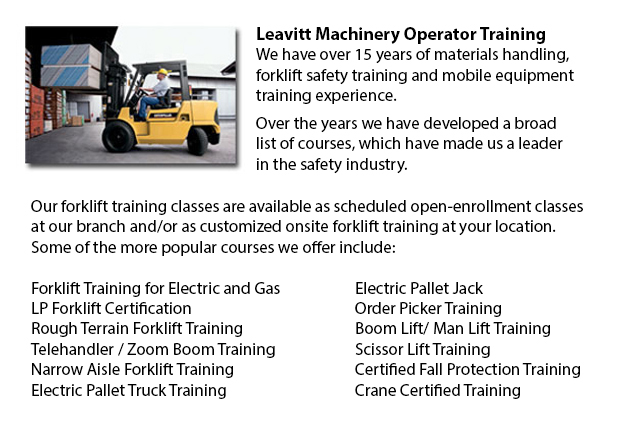
There are essentially two categories of lift trucks within the manufacturing industry, the rough terrain model and the industrial model. Rough terrain forklifts appeared in the 1940’s designed predominantly for use on irregular roads, best for lumberyards and construction sites, providing lifting muscle when there was no paved surface accessible.
Rough ground lift trucks usually use an internal combustion engine with a battery for power. The engines are able to function on propane, diesel or gas. Many suppliers are experimenting with rough ground forklifts that consume vegetable matter and run from ethanol. Substantial pneumatic tires with deep treads distinguish these vehicles to allow them to grasp onto the roughest soil type without any slippage or sliding.
A number of of the earliest versions of rough terrain forklifts had the capability to lift in excess of 1000 lbs, using forks that could pass underneath the item, jack it slightly and move it to an alternate location. After more than ten years on the market, all terrain forklifts were augmented with added hauling power, increasing the potential load to more than 2000 lbs. Telescoping booms were added in the 1960’s, enabling them to stack supplies a good deal higher than in previous years. The telescoping model characteristic is a staple of nearly all all terrain lift trucks today. Present designs are capable of managing well over 4000 lbs thanks to the continuous improvements over time. Telescoping capability has also improved with some styles attaining a height of 35 feet. Operator safety has also become a focus with many all terrain forklifts now constructed are outfitted with an enclosed cab for the operator, versus the older open air seating capacity.
The all terrain forklifts on the market these days both perform skillfully on unpaved surfaces and paved floors. This type of all terrain lift truck is marketed for its’ usefulness allowing the opportunity for companies to use one unit to carry supplies from an outside working site into a warehouse.
-
Crown Forklift
More -
Scissor Pallet Trucks
Scissor pallet vehicles are made for moving and raising individually stacked pallets by integrating a lifting mechanism that allows the pallets on the truck to be elevated. This gear is a great device for working in space limited areas that will not... More -
Boom Trucks
A boom truck is often recognized by the cable and telephone company vans that have the extended arm folded over their roofs. Commonly, a bucket-like apparatus sits at the extension of extendable arms. Normally called a cherry picker, or an aerial boo... More -
Hyster Forklift
Hyster is globally acknowledged as an industry leader in the forklift manufacturing business. However, it began as a manufacturer of lifting machinery as well as winches. Most of its production was concentrated in the Pacific Northwest and dealt mo... More -
Pneumatic Forklifts
Commonly used in shipping plants, the pneumatic forklift or pallet truck, may be used to move materials that are placed on top of pallets. A pneumatic lift truck commonly has a set of steel forks installed on a wheeled counterweight that also has a p... More

Forklift Certification Kamloops
TOLL FREE: 1-888-254-6157
Kamloops, British Columbia
forkliftcertificationkamloops.com/
Email Us
About Us


